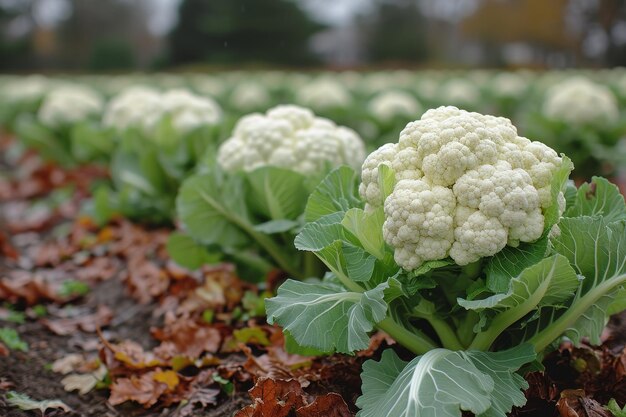Cauliflower, a versatile and nutritious vegetable, holds immense potential for cultivation in South Africa’s diverse agricultural landscape. With the right techniques and practices, farmers can enhance both the quality and yield of cauliflower crops, maximizing profitability and contributing to food security. In this article, we’ll explore effective strategies for cultivating high-quality cauliflower in South Africa:
1. Selecting Suitable Varieties:
Choose cauliflower varieties that are well-suited to the local climate and growing conditions in South Africa. Consider factors such as heat tolerance, disease resistance, and maturity period to ensure optimal performance and yield.
2. Soil Preparation and Fertility:
Prepare the soil thoroughly before planting by incorporating organic matter, such as compost or well-rotted manure, to improve soil structure and fertility. Conduct soil tests to determine nutrient levels and pH, and adjust as needed to create an optimal growing environment for cauliflower.
3. Proper Plant Spacing:
Plant cauliflower seedlings at the appropriate spacing to ensure sufficient room for growth and development. Adequate spacing helps prevent overcrowding, improves air circulation, and reduces the risk of disease and pest infestations.
4. Irrigation Management:
Implement efficient irrigation practices to provide consistent moisture to cauliflower crops throughout the growing season. Monitor soil moisture levels regularly and adjust irrigation frequency and duration based on weather conditions and crop needs to avoid under or overwatering.
5. Nutrient Management:
Fertilize cauliflower crops judiciously to meet their nutritional requirements at each growth stage. Apply balanced fertilizers containing nitrogen, phosphorus, and potassium, along with micronutrients as needed, to promote healthy plant growth, robust root development, and optimal yield.
6. Weed Control:
Implement effective weed management strategies to minimize competition for resources and prevent weed-related yield losses in cauliflower crops. Use mulching, hand weeding, mechanical cultivation, or herbicides as appropriate to keep weed populations under control throughout the growing season.
7. Pest and Disease Management:
Monitor cauliflower crops regularly for signs of pests, such as aphids, caterpillars, and cabbage worms, as well as diseases like downy mildew and black rot. Implement integrated pest management (IPM) practices, including cultural, biological, and chemical control methods, to minimize pest and disease damage and protect yield potential.
8. Timely Harvesting:
Harvest cauliflower heads at the appropriate stage of maturity to ensure optimal quality and flavor. Heads should be firm, compact, and uniformly colored, with no signs of discoloration or pest damage. Use sharp knives to cut cauliflower heads from the plant stem, taking care to avoid damaging surrounding foliage.
9. Post-Harvest Handling:
Handle harvested cauliflower with care to minimize bruising and damage during transport and storage. Keep cauliflower heads cool and dry, and store them in perforated plastic bags or containers in a cool, humid environment to maintain freshness and extend shelf life.
10. Continuous Learning and Adaptation:
Stay informed about the latest research, technologies, and best practices in cauliflower cultivation through ongoing education and networking with other growers and agricultural experts. Be open to experimentation and adaptation, and continuously refine your cultivation techniques to optimize quality and yield over time.
By implementing these techniques for enhancing quality and yield in cauliflower cultivation, farmers in South Africa can unlock the full potential of this nutritious and profitable crop. By prioritizing soil health, irrigation management, nutrient balance, pest and disease control, and post-harvest handling, growers can cultivate high-quality cauliflower crops that meet market demands and contribute to sustainable agriculture in the region. With dedication, innovation, and a commitment to excellence, South African farmers can cultivate a bountiful harvest of cauliflower and reap the rewards of their labor.
Join 'Farmers Mag' WhatsApp Channel
Get the latest Farming news and tips delivered straight to your WhatsApp
CLICK HERE TO JOIN






